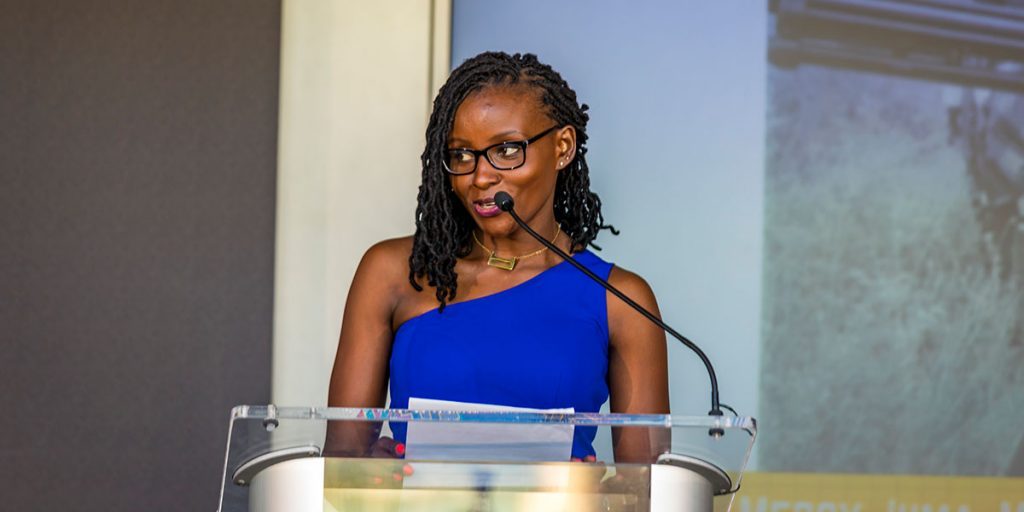Uncovering systemic abuse against disproportionately women and girls, but also men and boys, has been coined the Me Too movement. Started in 2007 by American Tarana Burke, #metoo has empowered many survivors to speak up about their abuse, and hold their abusers accountable. Powerful figures, whose abuse spanned decades and affected thousands of lives, have been implicated.

In sub-Saharan Africa, the movement gained ground through campaigns such as #mydressmychoice which started in Kenya in 2014. The #endrapeculture campaign was launched in South Africa to stop the pervasiveness of gender-based violence and femicide.
In Northern Nigeria, development worker, Fakhriyyah Hashim, originated the viral hashtag #ArewaMetoo in response to hearing about a young pharmacist who was badly beaten by her boyfriend. The hashtag sparked a necessary conversation about the entrenched culture of sexism in Northern Nigeria.
In our research, we set out to investigate newsroom sexism in Kenya, Nigeria and South Africa. We wanted to understand both the attitudes and the experiences of news professionals.
Our research includes in-depth interviews, field observations, focus groups and a survey recently published in Feminist Media Studies. The survey asked news professionals in the three countries about their personal experiences with sexual harassment and measured their levels of sexism.
The results showed a high prevalence of experiencing and witnessing sexual harassment in the news industry and that sexist attitudes were common. It was also clear that the response to the problem from organisations was low.
What we found
Twenty-five years ago, American academic psychologists Susan Fiske and Peter Glick wrote that sexism can be divided into two major areas: hostile and benevolent. They created a 22-item list to test both types of sexism called the Ambivalent Sexism Inventory. This has been tested and retested in several countries around the world.
Hostile sexism is what we usually think of when we consider sexism because it is overt negative attitudes towards women. These include stereotypes such as women seek power over men, women are too easily offended, and women tease men sexually.
Hostile sexism is associated with an increased probability of sexually harassing women or excusing the act of sexual harassment.
When we asked our participants about hostile sexism, men in all three countries expressed significantly higher levels of hostility than women.
And women in our survey experienced sexual harassment four times more than men. In Kenya, 77.5% of women participants stated that they had experienced sexual harassment at work and 40% said they had experienced it five times or more.
The rate of sexual harassment for women was also high in South Africa at 57.5% and in Nigeria at 38.1%. Men also reported experiencing sexual harassment in the newsroom. The highest rate was again in Kenya at 29.7%, then South Africa at 11.1% and Nigeria at 10%.
The majority of participants also witnessed sexual harassment, with 20% stating they’ve witnessed it multiple times. The source of harassment ranged from a fellow employee to higher management.
Just as troubling as the high levels of experienced and witnessed sexual harassment was the lack of organisational support. In total, 90% of participants chose not to report their experiences. South Africa was the only country where participants reported action had been taken when they reported their experiences. But for only 12% of women (men chose not to report).
This signals that sexual harassment is widespread in newsrooms in these countries. It also shows that the sexist atmosphere prevents participants from reporting their harassment to their organisation. This perpetuates a hostile and unsafe work environment.
Benevolent sexism was also prevalent. This is frequently referred to as chivalry.
The concept of cherishing women or putting them on a proverbial pedestal has evolved over centuries. It is often framed as positive.
In reality, it serves to limit women’s access to money, politics and society. Benevolent sexism pushes the narrative that women are vulnerable and need protection, therefore cannot handle independence. Women may be perceived as possessing certain refined qualities that men lack (also problematic), but are ultimately thought of as inferior to men and therefore aren’t granted the same freedom and respect as men. Benevolent sexism is so pervasive in societies that women often accept and even promote it.
In the workplace, benevolent sexism limits women’s ability to move up in organisations because of myths that women can’t be leaders or even lack the desire to hold positions that men are traditionally automatically afforded.
In the survey, there were no significant differences in the way men and women perceived benevolent sexism. This indicated that participants on average perceived women and men in traditional gender roles. However, when asked about promotion, salary and status in the newsroom, women in all three countries indicated gender inequality was a problem.
What must be done
All forms of gender inequality are interconnected. This means that creating safer and fairer newsrooms must include not only eliminating all forms of sexual harassment but also giving equal work opportunities for women and men.
Organisations must foster zero-tolerance policies against sexual harassment and ensure employees are able to report safely. This must be done in tandem with goals of gender parity in management, salary and other roles traditional held by men such as reporting on politics.
Eradicating hostile sexism will not happen until benevolent sexism is eradicated and vice versa. A holistic approach is needed in newsrooms and will benefit both men and women in the news industry.

